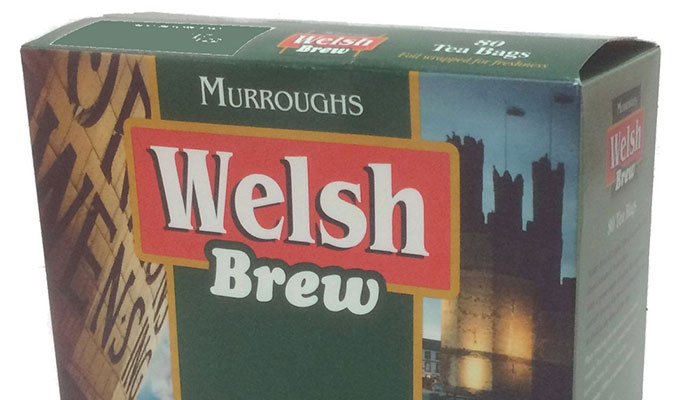Strainer is a Nanjing column. It is no accident that a tea enthusiast would choose the southern part of Jiangsu as a place to drink tea. Ours is a fine tea-growing and tea-consuming region, to say nothing of the tea-pot-making tradition in Jiangsu.
But this month finds Strainerʼs author back in Wales, the smallest of the nations in Great Britain. We all have to go home occasionally. Iʼm trying to fight jet lag by drinking from some appalling tea bag with a slice of fresh lemon. The best (Chinese, of course) tea I brought with me is for gifts. Hopefully, I will resist the temptation to drink that.
One day I hope to fulfill my dream of opening a proper Chinese tea house here in Wales. But this Januar y, with the Brexit blues playing loud, that dream feels no closer to viability.
Anyway, this is a country that does have indigenous tea-drinking traditions, quite independent of China. Walesʼ national dessert (or afternoon pick-me-up) is Bara Brith, a sweet sticky fruitcake made with brewed tea rather than water. Trust me when I say that itʼs pretty good.
- Apocalypse Tea; Should I Drive After Drinking This?
- Perfect Median; China’s Take on Earl Grey
- Swallowing is Just the Beginning; Rain, Flower, Cloud!
Thereʼs also the famous Tea Rooms in Patagonia, the South American community where Welsh settlers arrived in 1865. This oasis in the Argentine desert has become a symbol of “Welsh tea” for cruise-ship disembarkees and, famously, Diana, Princess of Wales, in 1995. But that tea wasnʼt actually planted by Welsh settlers, and is today merely purchased from Argentine growers.
In Wales itself, tea is still enjoyed in homes, with lots of milk, of course. But overall, it is in slight decline, with Starbucks-style coffee a more popular choice for those out and about.
And, letʼs be honest, Wales has probably less claim on tea than any other British nation. The Irish still drink far much more per capita (at number 3 in the world, behind only Turkey and Morocco). And it was a Scot who first “borrowed” the tea bushes from China to build up the industry in then-British Darjeeling.
Now, there is Murrough’s Welsh Tea blend, founded in 1993. My parents serve this in their Bed and Breakfast, and it’s available in shops and supermarkets here. What makes this blend of Indian and African fannings “Welsh” is its supposed “suitability for Welsh water” (whatever that means). On my return, I intend to give boxes of this stuff to the kind of people who don’t read Strainer.
- Sugar-Free Bottled Tea; China’s Wu Tang Clan
- Which Tea Brand Best Compliments Your Private Jet?
- Long Time, Long Jing No See
And then there is the Pembrokeshire Tea Company. As with Murroughʼs, I once had the chance to chat with the proprietor of this concern. Back in 2010, he claimed to be growing tea in this far-western, beachy tip of the British mainland.
Reading the small-print, it was clear that Welshgrown tea leaves were only one constituent of the (mostly-Indian) blend. By the time of the companyʼs dissolution in 2012, even that claim was missing from their publications.
The founder’s initial promise was to become 100 percent Welsh-grown by 2014, and I know that some of the disgruntled creditors came finally viewed the whole operation as a scam.
Was it deception or self-delusion? The odds were certainly against the plan; Pembrokeshire doesnʼt really have the elevation of most tea plantations. And then thereʼs the climate; wet enough, certainly, but lacking that necessary year-long warmth.
So I’m certainly not here for the tea. But it’s nice to be back home.









